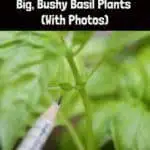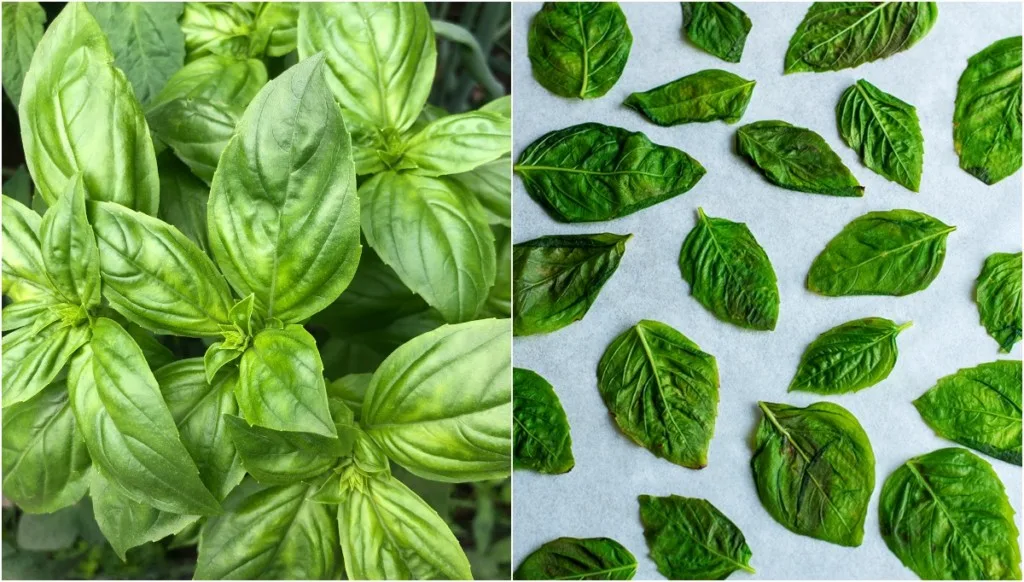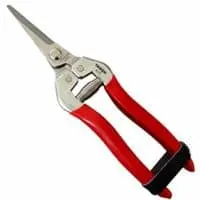Would you like your basil plant to look like this?
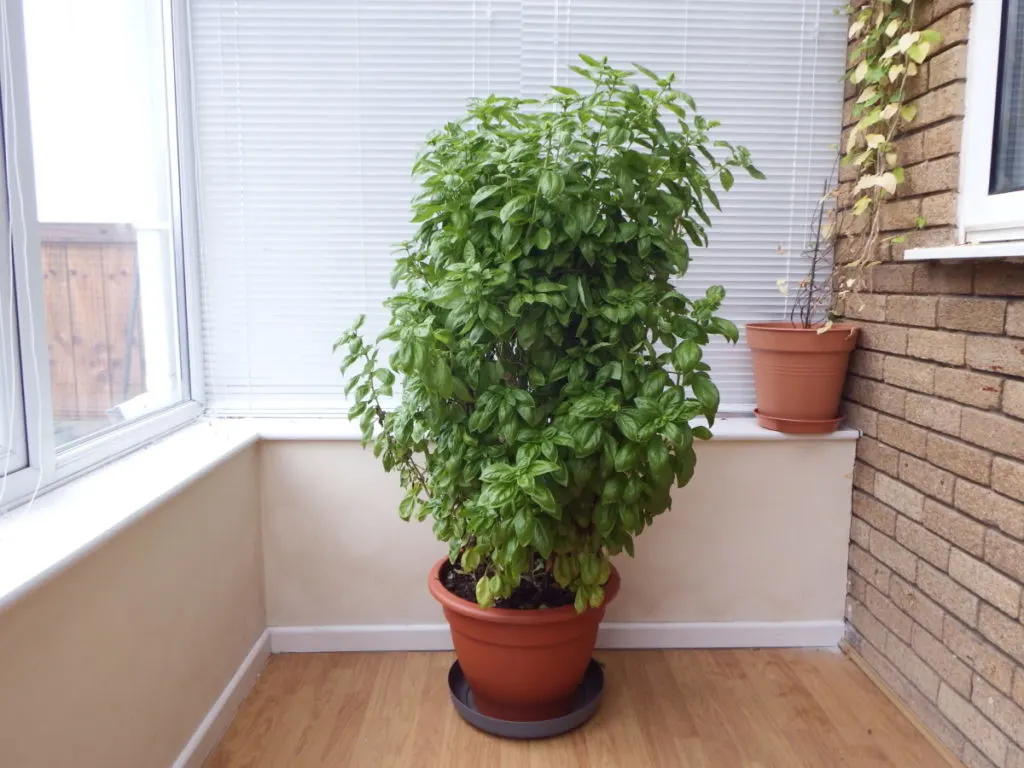
A lot of your basil growing success is in the pruning. In this article we’ll reveal how to correctly harvest your basil so the plant keeps getting bigger and bigger. And after that, we’ll reveal how this huge basil plant was grown.
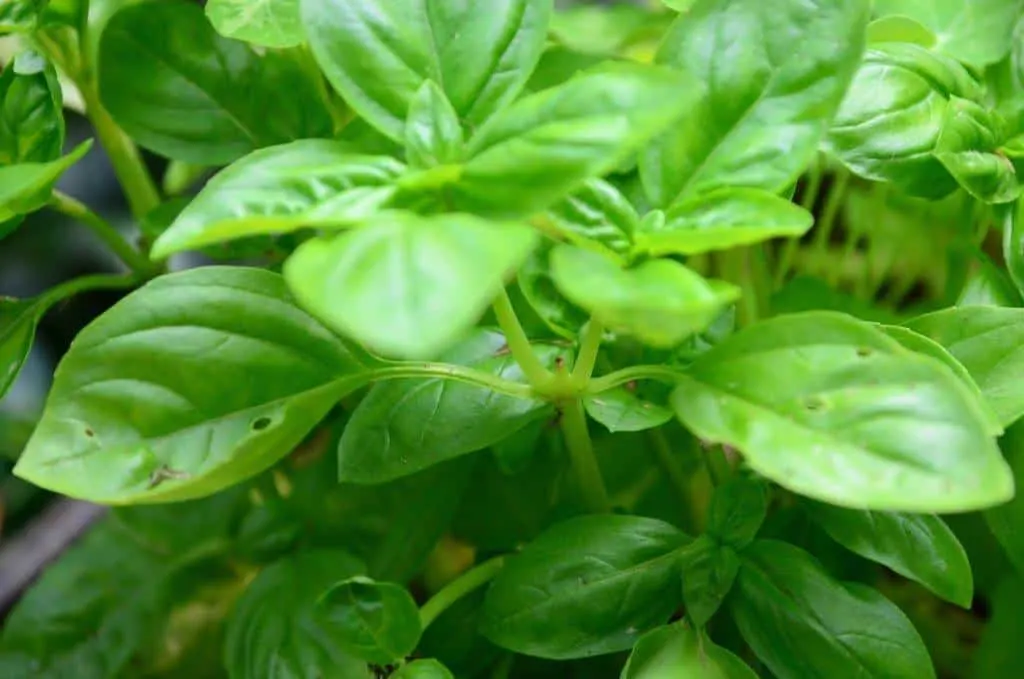
Have you ever bought a beautiful little basil seedling from your local nursery, only to have it quickly turn scraggly, tall, woody, and sparse?
For many years we struggled with the same issue.
We’d try time and time again to grow basil, excited to add it to our soups, salads, and Italian dishes, only to have it fail over and over again.
It wasn’t until I received one simple tip from a friend that I was suddenly able to grow big, bushy, beautiful basil plants.
It turns out, the way you prune the basil has everything to do with your success in growing it.
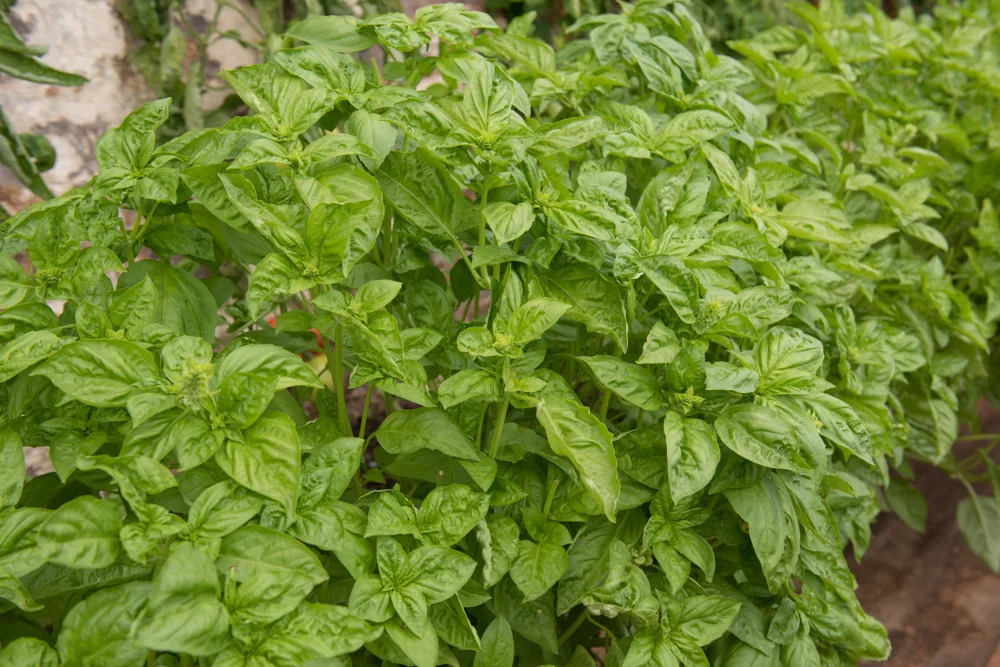
Why it matters how you prune basil
You may think, it’s just a plant, why does it matter how I pick off leaves?
When it comes to pruning basil (or many other plants for that matter), the leaves you choose to remove matter for the health of the plant and for your continued enjoyment of fresh basil all season long.
For the plant to remain healthy, grow vigorously, and provide you with plenty of basil this season, it’s important to learn how to prune it correctly.
The wrong way to prune basil

When learning how to correctly prune basil, it’s important to first know the wrong way to go about pruning.
Most people are tempted to pick off the biggest leaves of the plant, those growing on the bottom branches.
The biggest leaves on the bottom branches are the powerhouses of the whole plant. Those big leaves take in the most sunlight and make sure the basil plant is getting adequate nutrients. Pruning them off significantly hurts the plant.
Not only does removing those bottom leaves hurt the plant, it doesn’t help the plant create new leaves and branches.
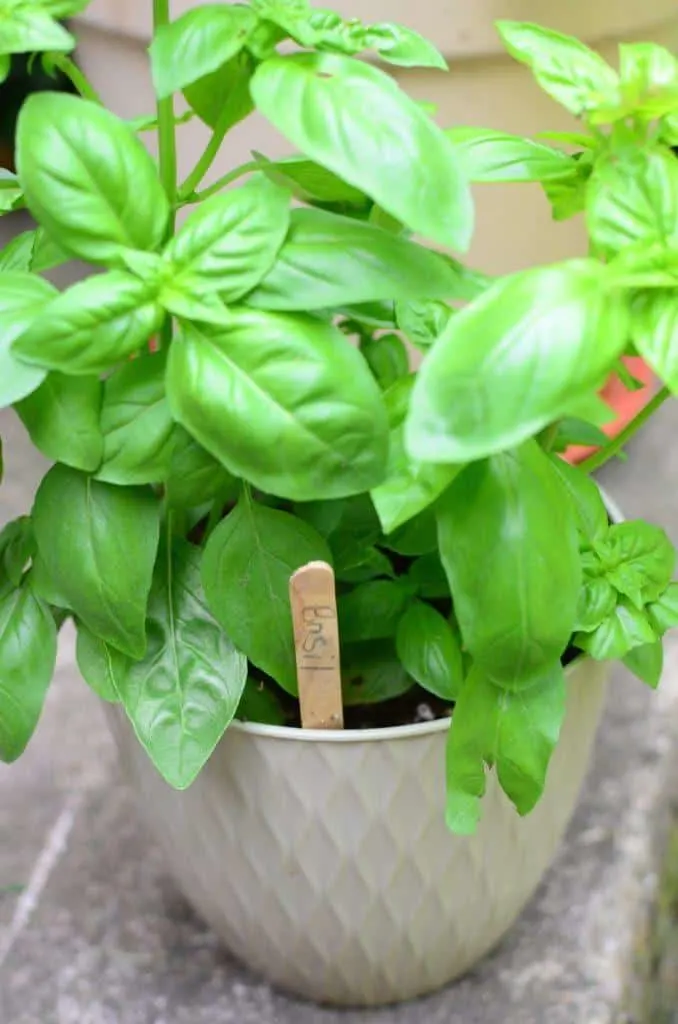
The correct way to prune basil
Now that you know the wrong way to prune basil, let’s go over the correct way to pick off basil leaves.
The leaves that you should remove are those growing on the top of the plant.
Yes, they’re smaller and won’t make nearly as much Caprese salad as those big leaves on the bottom, but there’s a good reason to pick off the leaves from the top of the plant.
Every time you prune the leaves from the top of the basil plant, it allows the plant to create two new branches from the spot that you picked.
Those two new branches will create new sets of leaves, and when you prune them again, they’ll create two new branches again.
Pruning this way allows the plant to grow outward instead of only upward. It will grow exponentially bigger every time you prune the plant.
Alternatively, if you were pruning the plant the wrong way, it would continue to grow leaves from the one central branch, but would eventually turn woody, skimpy, sparse, and ultimately die.
3 Steps to Prune Basil Correctly
1. Identify
Identify the spot on the branch where you can clearly see new tiny leaves forming.
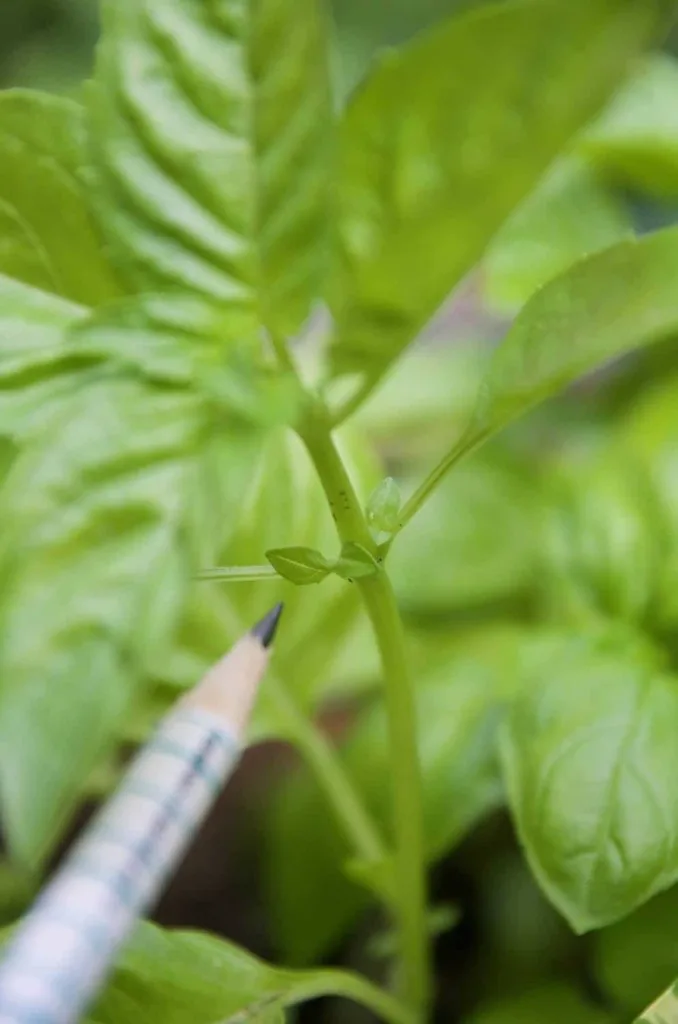
2. Cut
Cut the branch just above those tiny leaves, making sure not to disturb the leaves themselves. Use some herb pruning shears to ensure a clean cut.

3. Repeat
Repeat this process with all branches that have tiny leaves growing.
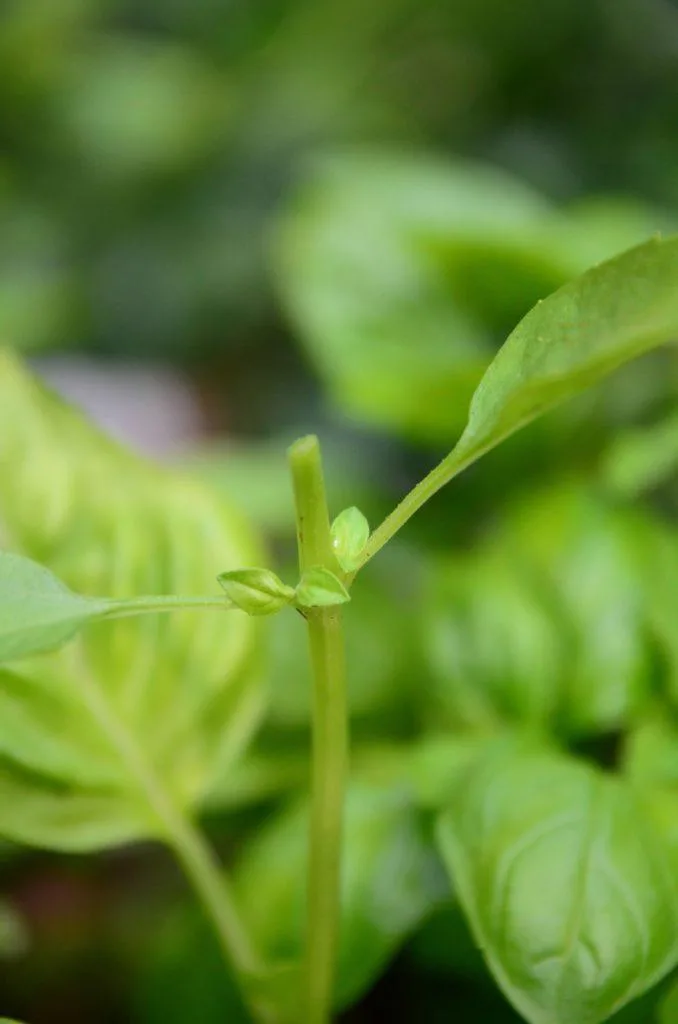
In a few weeks you’ll see that those tiny leaves turned into new branches, and you can again prune the new branches just above new sets of leaves so those will branch out again.

And there you have it, the secret to growing big bushy basil plants!
Now you know how to grow big bushy basil plants, why not grow more of them for free? It’s really easy to propagate basil cuttings to grow brand new plants. Here’s how to do it – plus 14 more herbs you can try it with.
More Tips For Growing Huge Basil Plants – From A Basil Growing Superstar
I was browsing the social media website, Reddit, one evening, when I came across something quite spectacular.
It was the biggest basil plant I’d ever seen.
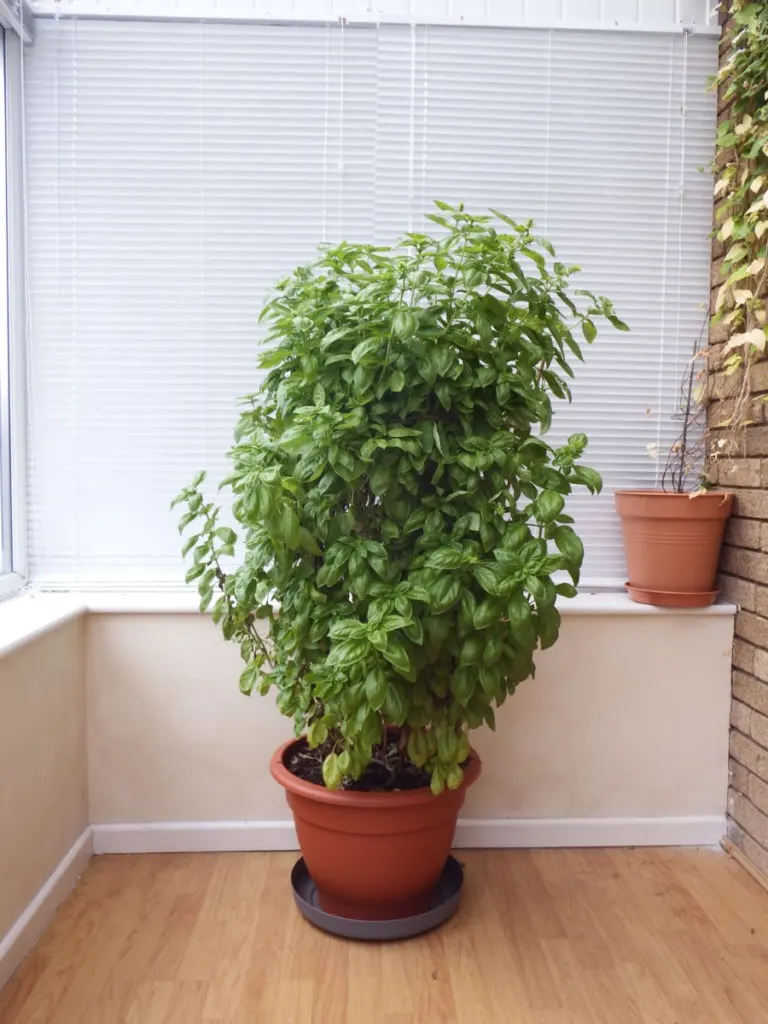
I got in touch with the basil growing superstar (who wishes to remain anonymous) and found out how he does it.
By his own admission, a lot of what he does goes against conventional gardening wisdom, but this is what works for him.
If you want to replicate his success, why not give this a try?
- Each year he buys a supermarket basil plant (yes, really!) and separates the seedlings. Supermarket herbs are really just a lot of seedlings stuffed together. They are too cramped to thrive as they are, as you’ll learn in my guide to keeping supermarket herbs alive.
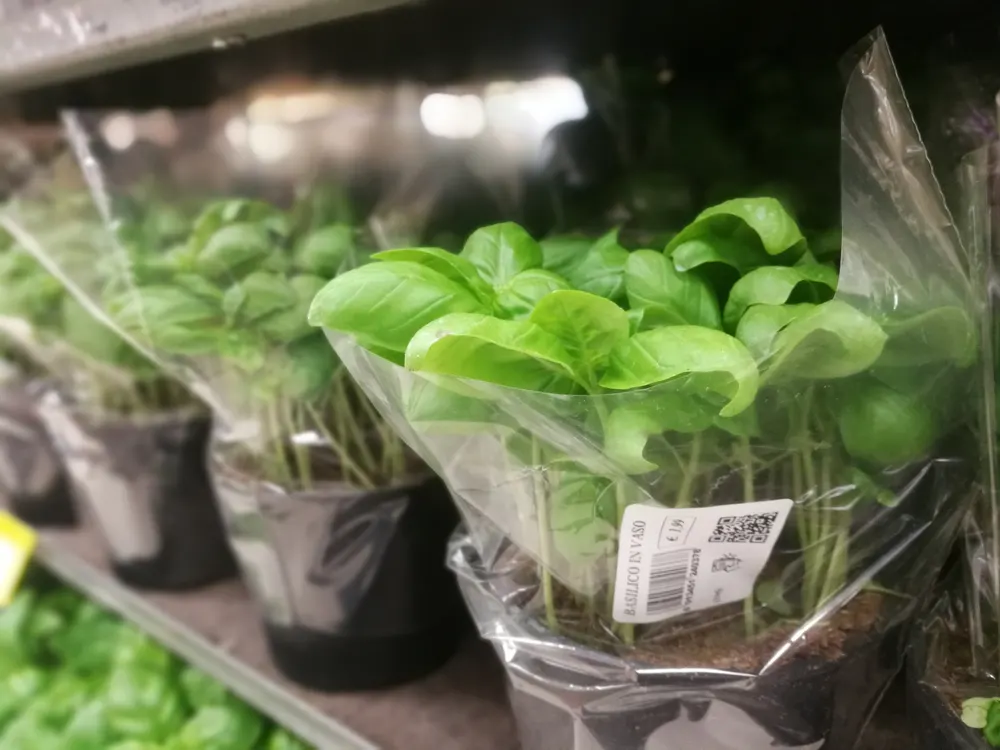
- He plants the individual seedlings into the biggest pot he owns filled with pure compost. The idea is that each seedling will compete with each other for light and it will force them to grow bigger and bigger.
- He waters his little basil plants constantly. The dish at the bottom is always full of water.
- He keeps the basil plants in the conservatory / sun room where summer temperatures can regularly exceed 90F.
- Throughout the summer the basil plants are fed with a tomato feed.
- If a branch gets too leggy, it’s cut back using the basil pruning method outlined above.
And this is the result:

Now, what to do with all those basil leaves?
15 Unusual Ways To Use Up All Your Basil Leaves
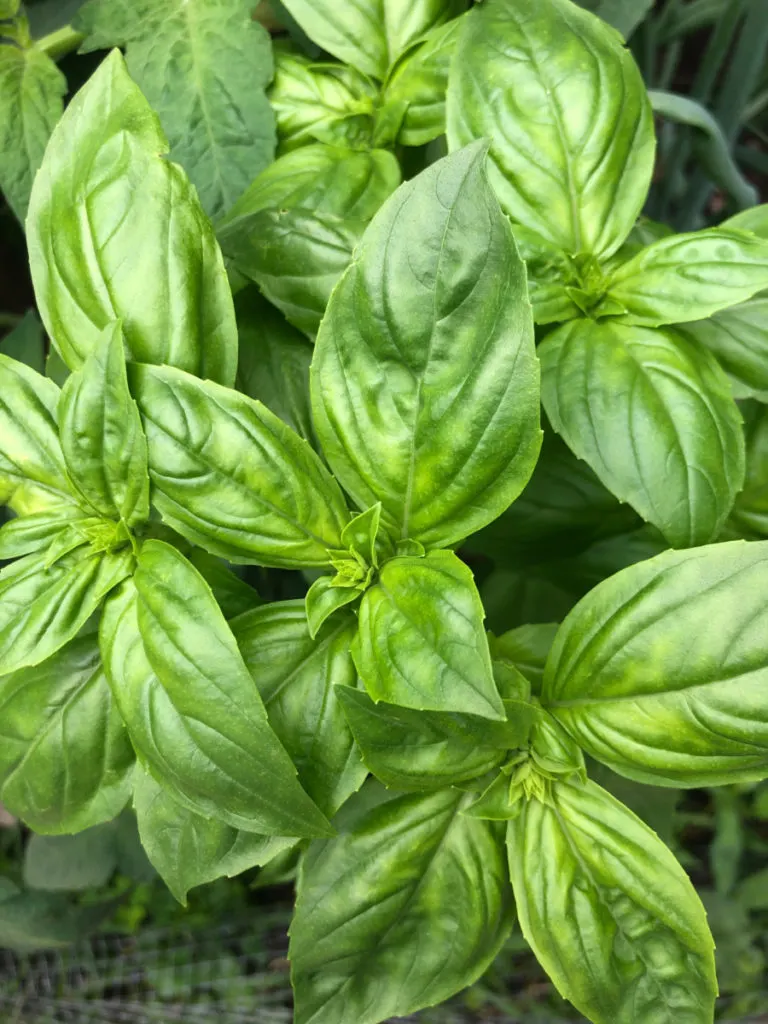
After following this tutorial, you should be able to harvest more basil than you ever dreamed of. But basil isn’t just for making pesto.
Take a look at our article revealing 15 creative and unusual ways to use up a glut of basil leaves.
Plus, make sure you learn how to dry and preserve your harvested herbs so that nothing goes to waste. You can learn two of the easiest methods for drying herbs at home in our article here.
And if you’d rather learn how to freeze your huge basil harvest, take a look as Tracey tests four of the most popular basil freezing methods and reveals the only way that really works.
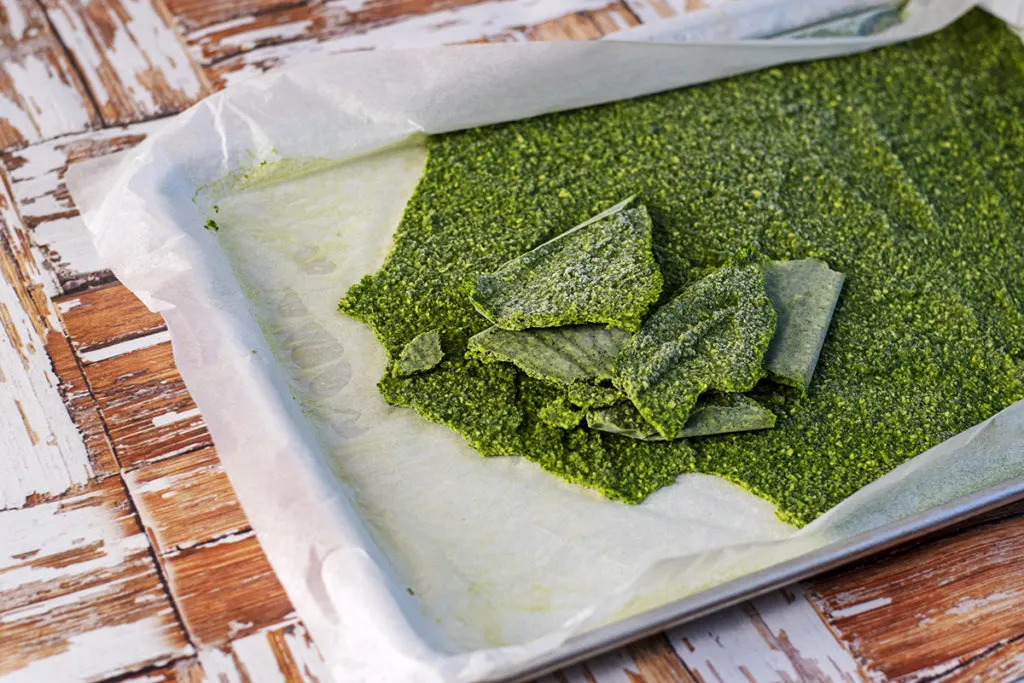
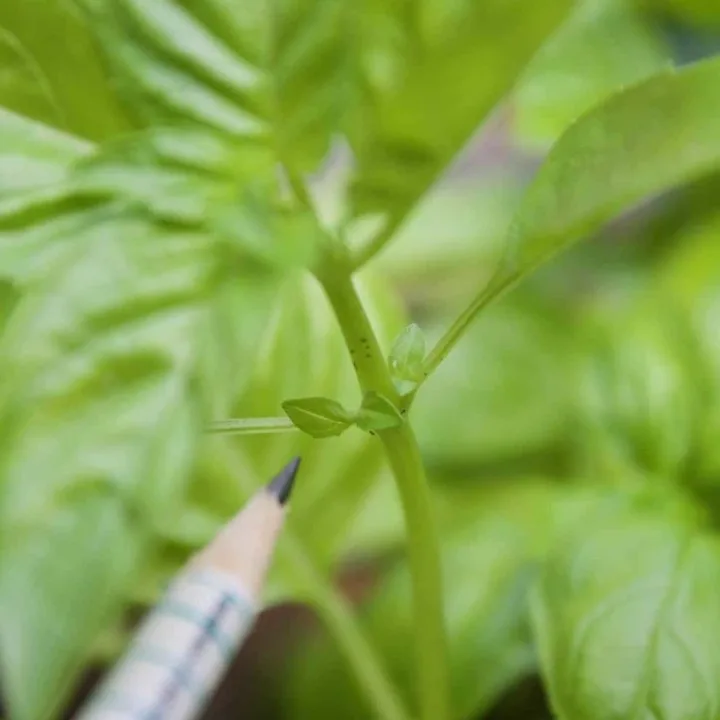
How to Prune Basil for Big, Bushy Basil Plants (With Photos)
You've probably been pruning basil wrong all your life!
Materials
- None
Tools
- Herb Pruning Shears
Instructions
- Identify the spot on the branch where you can clearly see new tiny basil leaves forming.
- Cut the branch just above those tiny leaves, making sure not to disturb the leaves themselves.
- Repeat this process with all branches that have tiny leaves growing.
Notes
In a few weeks you’ll see that those tiny leaves turned into new branches, and you can again prune the new branches just above new sets of leaves so those will branch out again
Recommended Products
As an Amazon Associate and member of other affiliate programs, I earn from qualifying purchases.
Pin This To Save For Later
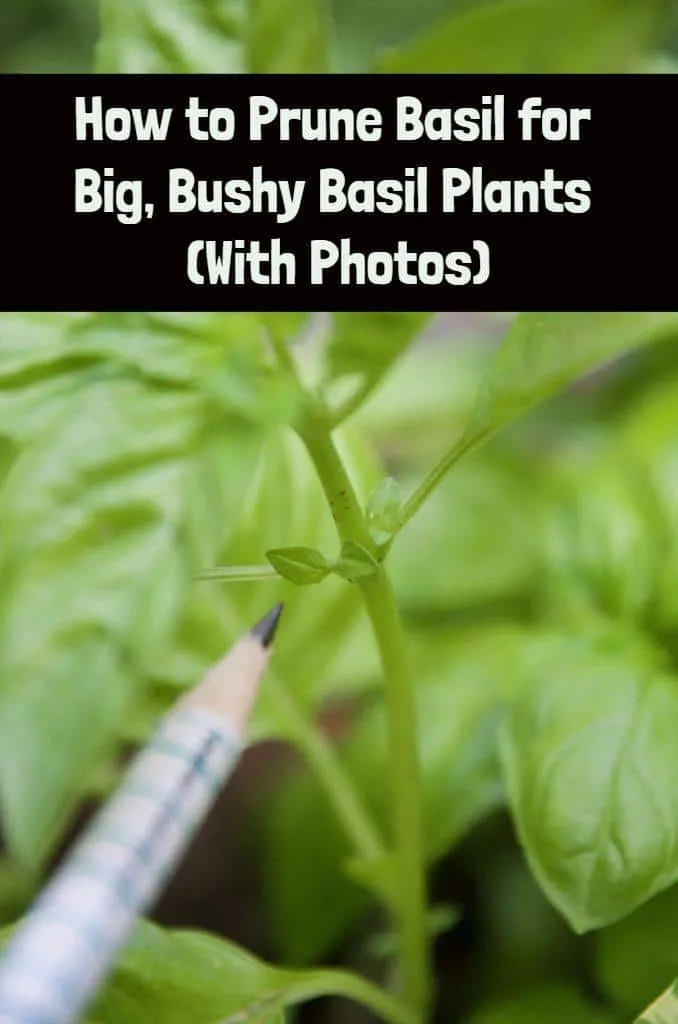
Read Next: How To Prune Tomato Plants For Your Best Harvest Ever
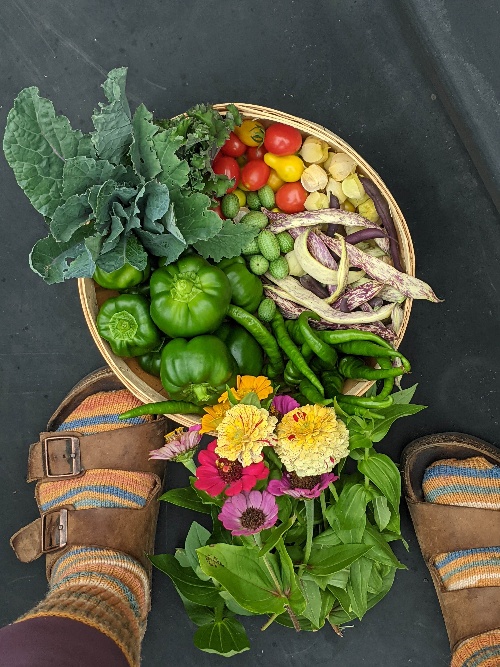
Get the famous Rural Sprout newsletter delivered to your inbox.
Including Sunday ramblings from our editor, Tracey, as well as “What’s Up Wednesday” our roundup of what’s in season and new article updates and alerts.


